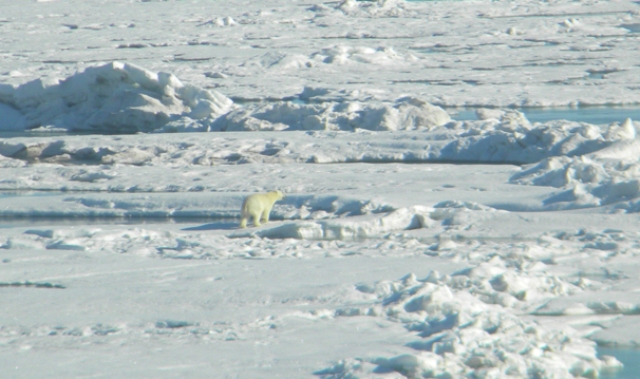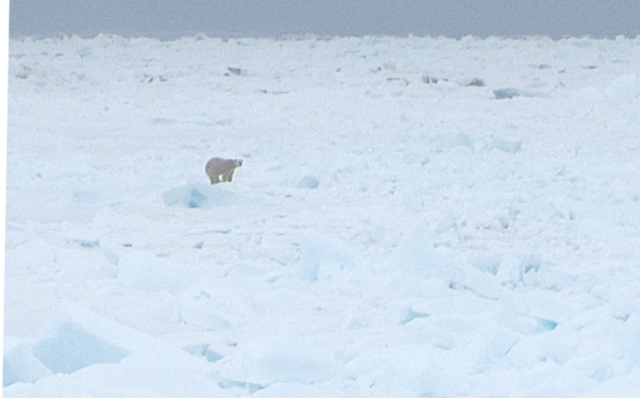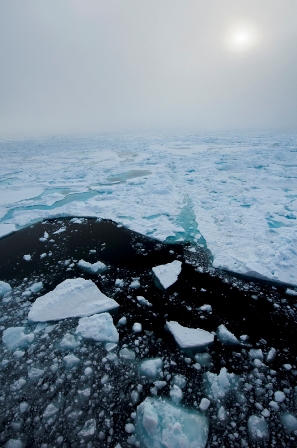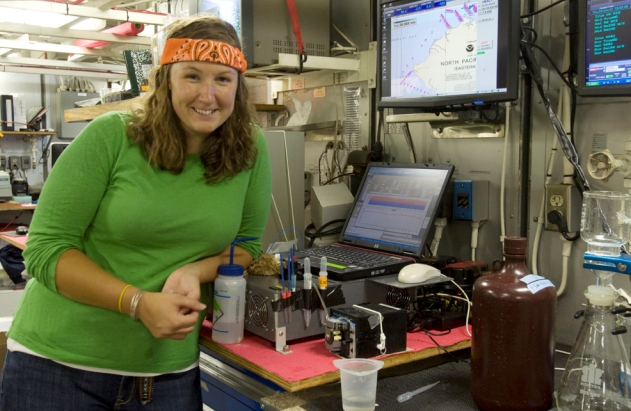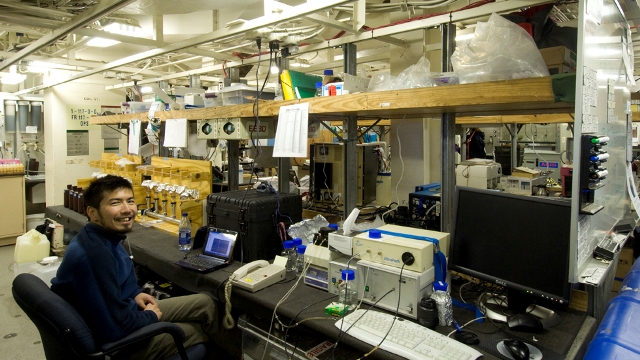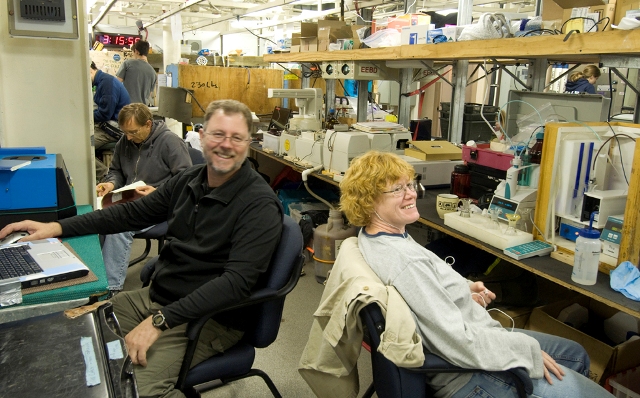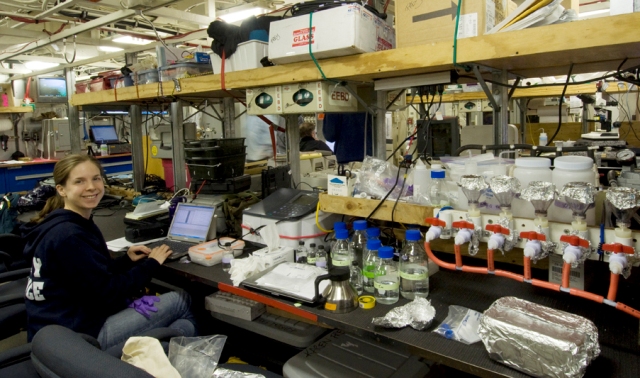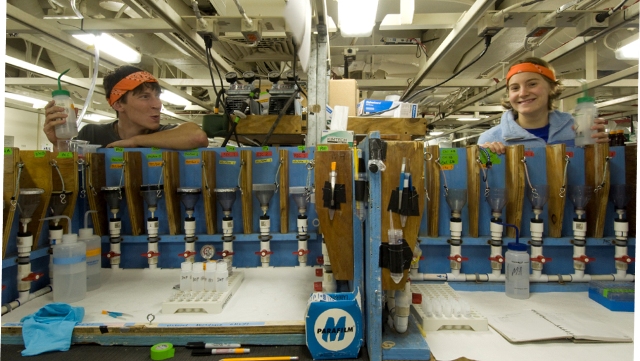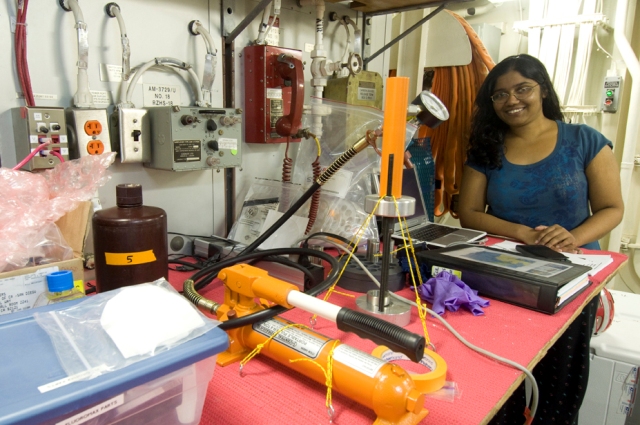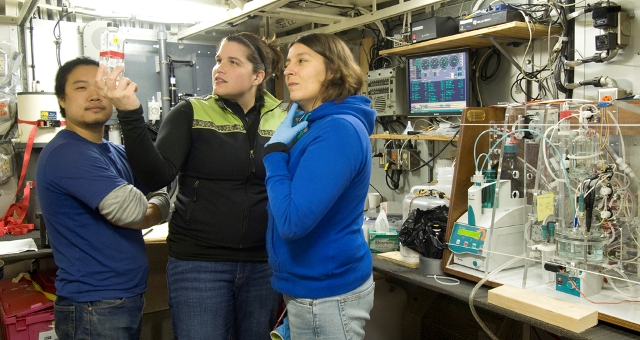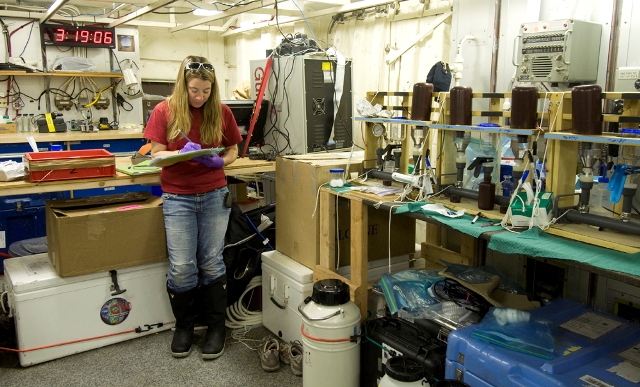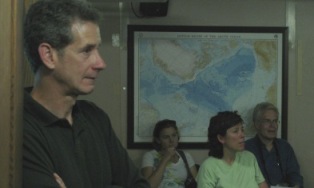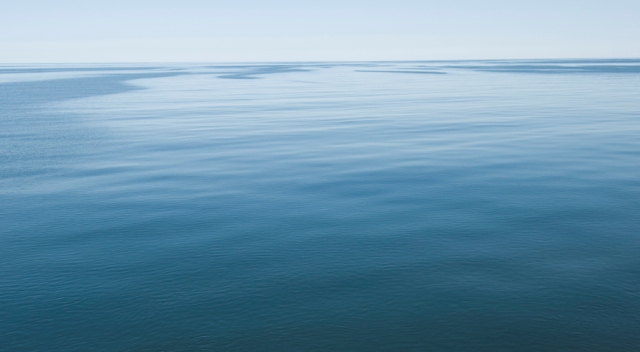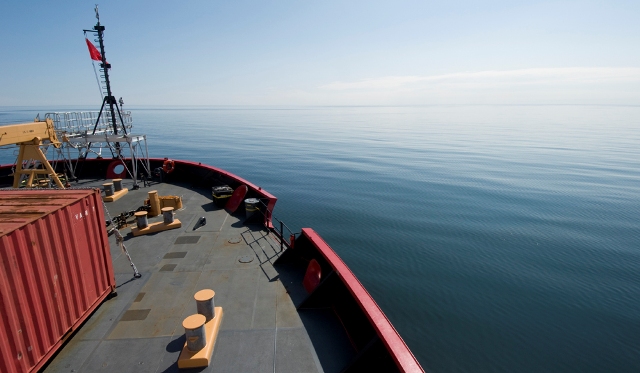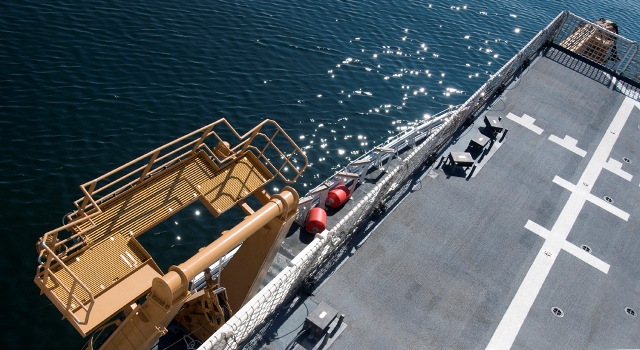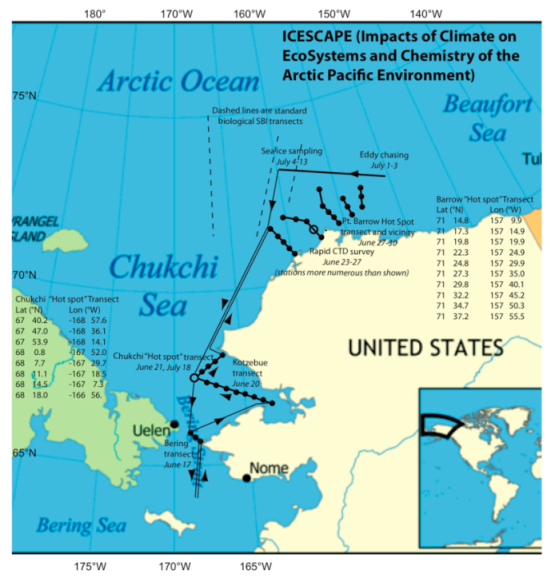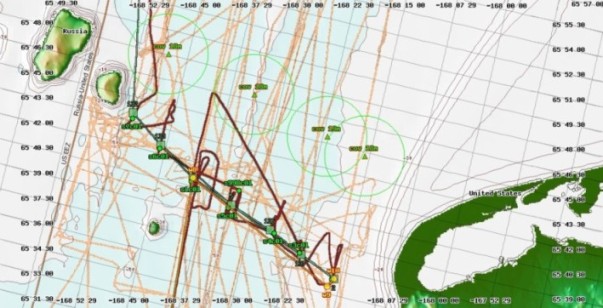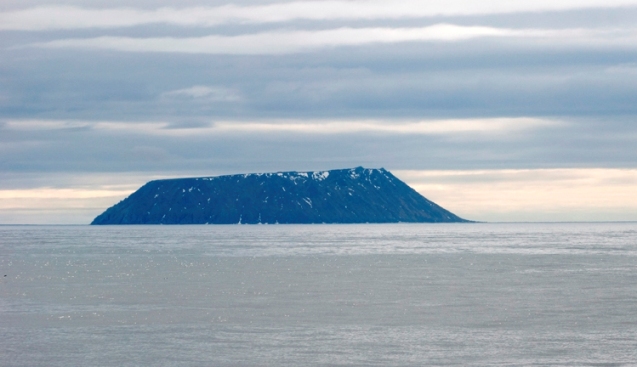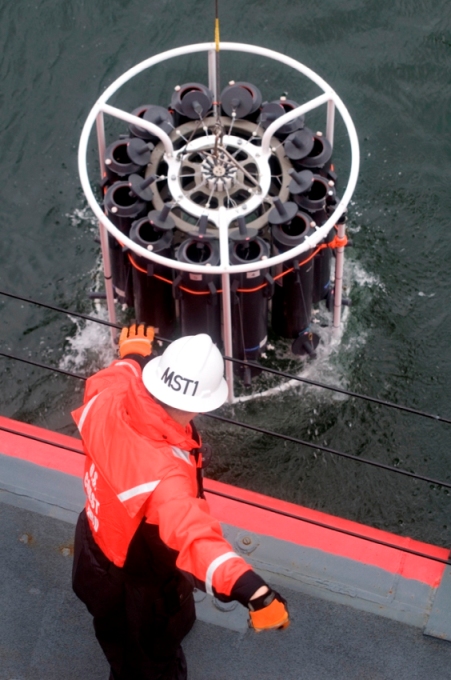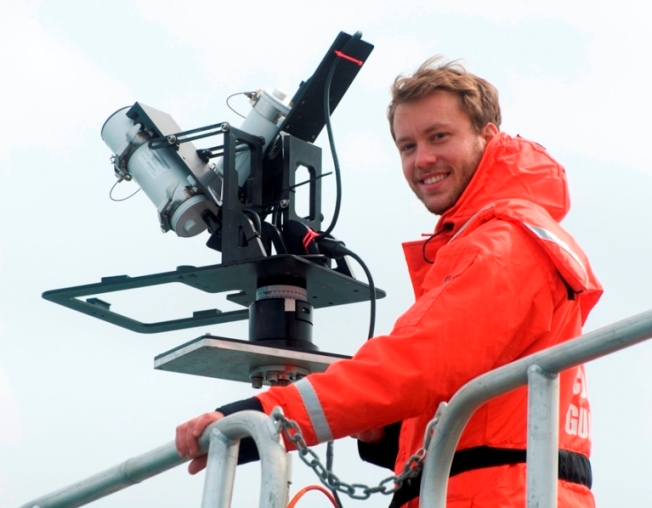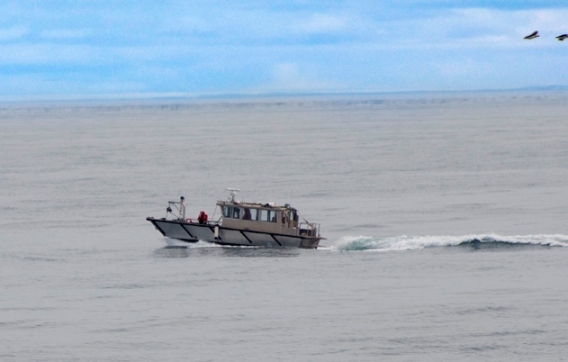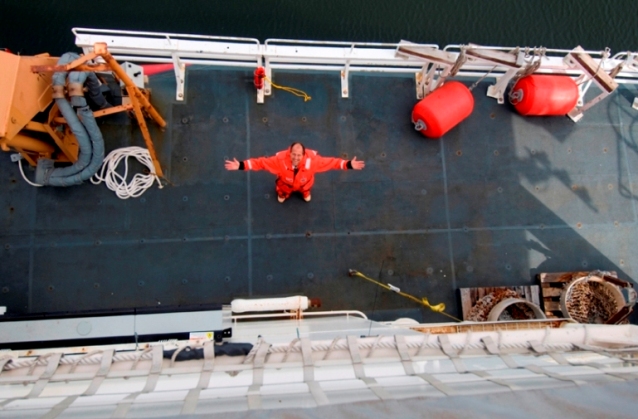From: Kate Lowry, Stanford University
Kate Lowry of Stanford University and the Healy. (Photo by Haley Smith Kingsland)
Sunday, June 27, 2010, was a day I will remember forever. After spending twelve straight hours filtering seawater in the main lab on my night shift, I generally roll over and go back to sleep when an announcement over the ship pipe system wakes me up during the day. Last Sunday, however, there were two announcements that even those of us still in bed were excited to hear. The first was that there was a polar bear off the starboard bow! Like a few of my sleeping neighbors, I rushed out of bed and onto the deck to try to catch a glimpse of the polar bear while it was still in sight.
After watching the polar bear with binoculars from the bow, I went with fellow science party members Molly Palmer (Stanford University), Kristen Shake (University of Alaska – Fairbanks), and Becky Garley (Bermuda Institute of Ocean Sciences) to the aloft control room for a better view. Although you do have to ask permission from the bridge crew to climb into the aloft control room, the watch officers are very open to letting scientists go up and look around. It was truly a surreal experience to climb to the top of the ship, still in my pajamas, and look out over the ice. Below us, other scientists were setting up for a full ice station off the port side, far away from the polar bear that eventually wandered out of sight and into the fog.
Later in the day an even better announcement awakened me. As soon as the science station was complete, there would be “ice liberty” for everyone! We had heard rumors that there might be a chance to get off the ship and play around on the ice, but we knew that it depended on the weather and the ice thickness. Fortunately, the location and conditions we saw Sunday afternoon were perfect. After a short briefing in which we were told to dress warmly, stay away from melt ponds, and what to do in case of an emergency, we lined up in a mix of orange mustang suits, civilian clothes, and funny costumes to walk down the gangway and onto the ice. For one of the first times since we left Dutch Harbor, nearly everyone aboard the Healy got a chance to relax and have fun.
While we were on the ice, we played games, took pictures, and enjoyed soda and candy, courtesy of the ship’s Morale Committee. After being stuck on the ship for so long, we found many different activities in which to participate. Some of the crew members began a game of football while others played soccer on the ice. Scientists joined a game of frisbee in which one of the biggest challenges was to avoid landing the disk in a nearby melt pond. Snowball fights broke out between different lab groups and excited students posed for funny pictures.
After two weeks of hard work on the ship and even more time for the crew members, “ice liberty” was just what we all needed to feel rejuvenated and ready for the rest of the cruise. As we re-boarded the ship nearly two hours later and returned to normal life at sea, we felt satisfied, thankful to Captain Rall and the Healy crew for keeping us safe on the ice, and hungry for the delicious turkey dinner that awaited us on the mess deck.
Scott Hiller, Alejandro Quintero, Jim Swift, Melissa Miller, Parisa Nahavandi, and Susan Becker, all of the Scripps Institution of Oceanography (Photo by Karen Romano Young)
Brian Schieber, Greg Mitchell, Elliot Weiss, and Brian Seegers, all of the Scripps Institution of Oceanography, with Sharmila Pal of the University of South Carolina (Photo by Haley Smith Kingsland)
Mark Morgan, William Glenzer, and John Carter, all of the U.S. Coast Guard (Photo by William Glenzer)
Emily Peacock and Sam Laney of the Woods Hole Oceanographic Institution (Photo by Karen Romano Young)
Zach Brown, Matt Mills, Gert van Dijken, Kevin Arrigo, Kate Lowry (this happy blogger!), Molly Palmer, and Haley Kingsland, all of Stanford University (Photo by Karen Romano Young)
Owen Dicks, Kurt Stewart, Chris Skapin, Lee Brittle, and Evan Steckle, all of the U.S. Coast Guard (U.S. Coast Guard Photo)
Coasties and science party members enjoying the ice together. (Photo by Haley Smith Kingsland)
Photo by Karen Romano Young
Bottom Row: Zach Brown, Molly Palmer, Kristen Shake, Melissa Miller; Middle Row: Elliot Weiss, Becky Garley, Parisa Nahavandi; Top Row: Kate Lowry, Alejandro Quintero, Haley Kingsland (Photo by Jeremy Gainey)
Science party members (Photo by Evan Burgeson)

